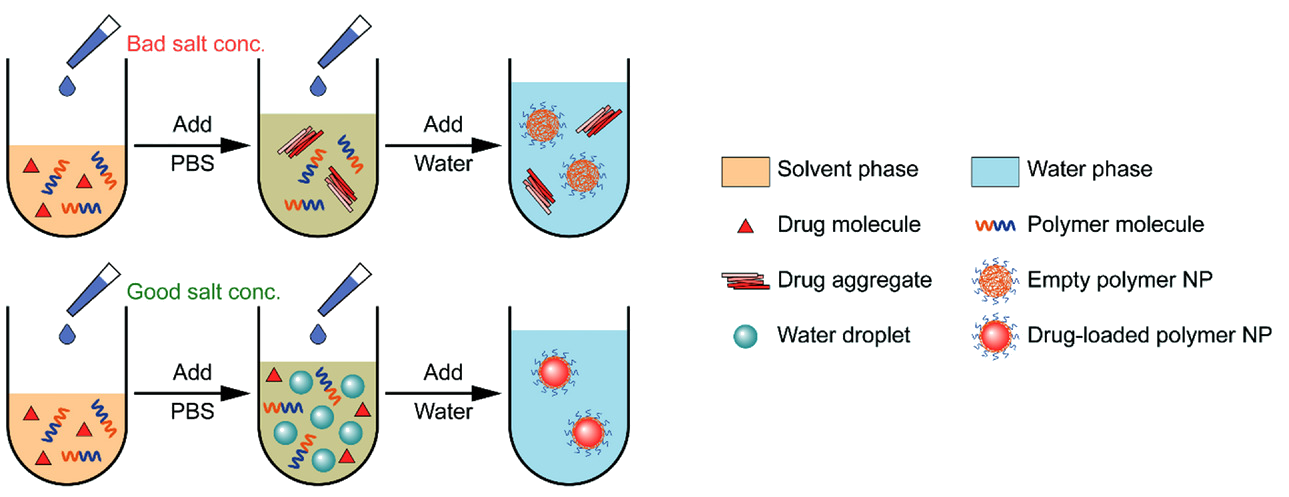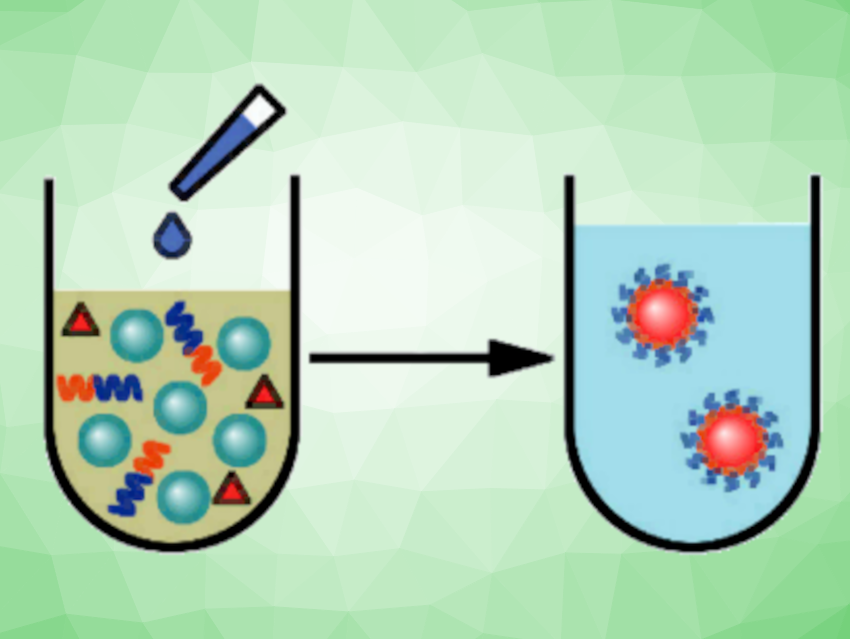In nanomedicine, increasing the drug loading of nanoparticles (NPs) is an important challenge. Particles with high drug loading have advantages such as a need for less carrier material, better control over the drug release, and improved efficacy and safety.
“Salting out” can be used, e.g., for protein purification. It relies on the principle that proteins become less soluble in solutions with high salt concentrations. As the solubilities of different proteins are different at a particular salt concentration, proteins can be separated using this effect. Similarly, polymers can be precipitated out using a salting-out method.
Chun-Xia Zhao, The University of Adelaide, Australia, and colleagues have developed a simple and efficient salt concentration screening method for the preparation of polymer nanoparticles with high drug loadings. The researchers found that the precipitation time of a polymer and a drug were tuneable by varying salt concentrations. At suitable salt concentrations, the drug and the polymer can co-precipitate and form nanoparticles with high drug loading and high encapsulation efficiency (pictured below in the bottom row, PBS = phosphate buffered saline).

The drug-loaded nanoparticles created at optimized salt concentrations can achieve very high drug loadings (up to 66.5 wt%), high encapsulation efficiency (up to 99.8 %), and excellent stability (over one month). The method is versatile and can be adapted to various hydrophobic drugs and dyes. It can be tuned to achieve different drug loadings and use different polymers or solvents.
- Phase separation‐induced nanoprecipitation for making polymer nanoparticles with high drug loading,
Guangze Yang, Yun Liu, Song Jin, Yue Hui, Xing Wang, Letao Xu, Dong Chen, David Weitz, Chun‐Xia Zhao,
Aggregate 2023.
https://doi.org/10.1002/agt2.314




